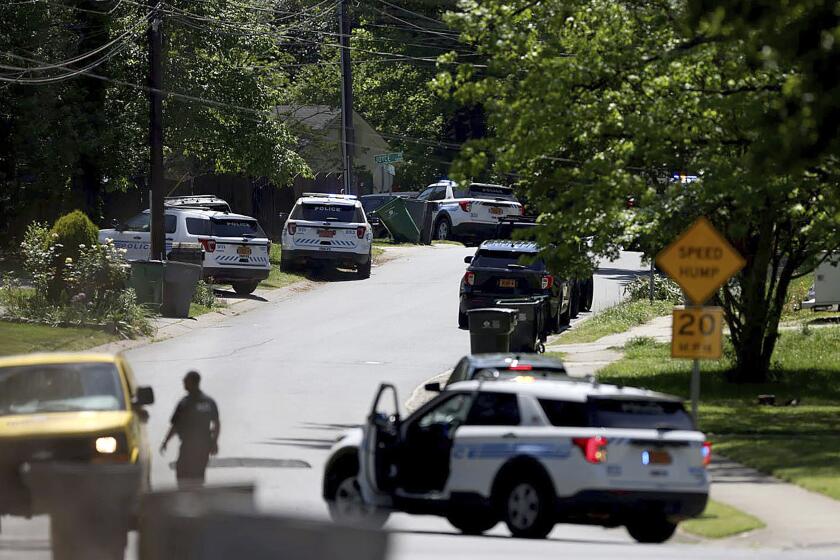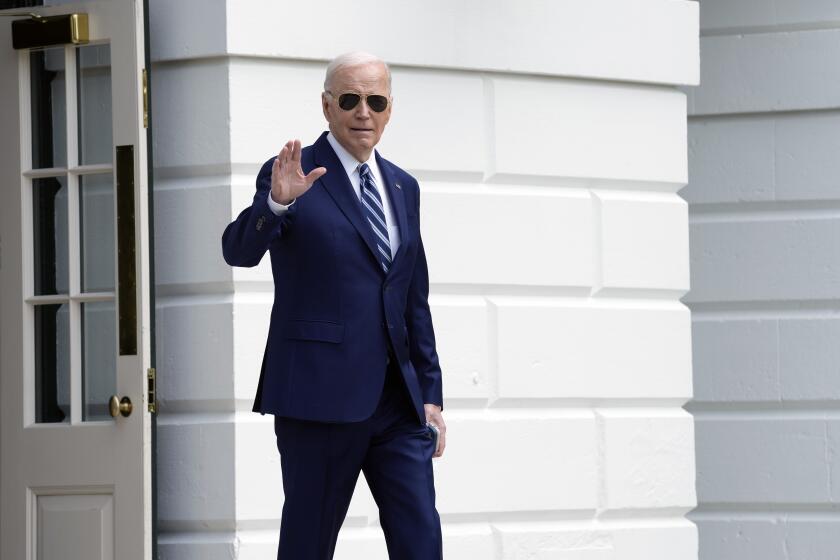Foiled Attack on Saudi Oil Sends Ominous Message
A suicide bomb attack at a huge Saudi Arabian petroleum facility rattled world energy markets Friday, sending crude prices soaring more than $2 a barrel in New York as it underscored the fragility of world oil supplies.
The massive Abqaiq processing plant was undamaged when at least two cars exploded outside its gates, Saudi officials said. Although operations weren’t interrupted, the assault on the world’s largest oil producer exacerbated the ever-present fear that the flow of oil could fall short of the globe’s voracious appetite. Traders call that anxiety petronoia.
The concerns were heightened because the targeted plant is vital to Saudi oil operations, handling about two-thirds of the kingdom’s output of 9.5 million barrels a day and 7% of the world’s supply. Without the vast Abqaiq facility, about 25 miles inland from the Persian Gulf coast, the nation’s ability to export oil would be crippled.
“This is a major-league deal,” said Matthew Simmons, an oil-industry consultant who has written a book about Saudi Arabia’s role in the world petroleum market. “This shows that the terrorists are acutely aware of where you want to go for the jugular vein.”
Oil had grown cheaper recently, slipping below $60 a barrel last week for the first time this year as U.S. inventories swelled.
But unrest in Nigeria and other hot spots pushed prices higher this week, capped by Friday’s thwarted attack. In New York futures trading, U.S. benchmark crude briefly jumped above $63 a barrel before settling at $62.91, up $2.37. The day’s increase, equal to 3.9%, was the largest percentage hike since the markets cowered Sept. 19 as Hurricane Rita threatened the U.S. Gulf Coast, a major oil production and refining center.
Within the vast, sprawling infrastructure of oil production, it would be difficult to find a target more vital to the global marketplace than the Abqaiq plant. Saudi Arabia supplies 11% of world oil consumption and is the third-largest exporter to the United States, after Canada and Mexico. At Abqaiq each day, the equivalent of 6 million barrels is stripped of hydrogen sulfide and water and prepared for export.
“If there had been a hit ... oil would be north of $80,” said Stephen Leeb, president of Leeb Capital Management in New York. “With the wink of an eye you can turn what is a razor-thin surplus in the oil market into a dramatic deficit,” said Leeb, author of a book titled “The Coming Economic Collapse: How You Can Thrive When Oil Costs $200 a Barrel.”
Even though current U.S. inventories of oil are well above year-ago levels, oil traders fret about any sign that oil production may be interrupted, especially when it happens in Saudi Arabia, the home of a quarter of global reserves.
Saudi Arabia has seen terrorist attacks before, including two deadly assaults on oil company offices and employee housing in 2004. But Friday’s strike at the complex in eastern Saudi Arabia was the first to come so close to a key facility, analysts said.
The attack was thwarted when guards fired on the suicide bombers’ cars, causing the vehicles to explode. At least two militants died, and Saudi television reported that two security guards were killed. Al Qaeda claimed responsibility on a website often used by Islamic militant groups.
Saudi Oil Minister Ali Ibrahim Naimi said Abqaiq’s operations and exports “continued to operate normally.”
Saudi Aramco, owner of the Abqaiq complex, said in 2004 that it had strengthened security at many oil facilities by adding electrified fences with barbed wire, surveillance cameras, bomb-sniffing dogs, helicopter patrols and thousands of guards. Abqaiq is surrounded by three fences; the attackers failed to breach the outermost barrier.
“I’m encouraged that Saudi security has been so good,” said Andrew Lipow, a Houston-based industry consultant. “But you have to be mindful that terrorists can have many more opportunities, and you have to be concerned about another attack where they get through.”
The Middle East kingdom is the focus of many doomsday scenarios thought up by the likes of Securing America’s Future, an advocacy group that has simulated oil catastrophes to emphasize the vulnerability of the U.S. economy.
In August, the group tallied the repercussions of a fictional scenario in which sudden turmoil in Saudi Arabia caused 3.5 million barrels to be pulled from world markets. In the simulation, prices leapt to $161 a barrel, the economy lost 2 million jobs and the average U.S. household spent $5,214 on fuel annually.
In congressional testimony in July, Gal Luft of the Institute for the Analysis of Global Security told lawmakers: “One scenario our economy cannot withstand is a major attack on one of Saudi Arabia’s oil facilities.”
Today, worldwide oil production is barely keeping pace with surging demand in the United States as well as in China and other nations. Even Saudi Arabia, with all its reserves, is producing near peak capacity.
“This is a reminder that we are out of spare capacity,” said Simmons, the consultant and author. “We are not able to turn anything else on to make up for any shortfall.”
Global oil production already has taken a hit in Nigeria, a member of the Organization of the Petroleum Exporting Countries, or OPEC, where rebels have attacked oil facilities and cut off 500,000 barrels a day of supplies. An additional 350,000 barrels a day of output from the Gulf of Mexico is still shut down because of hurricane damage.
“This is a very serious problem that’s not going to be resolved anytime soon,” Leeb said. “The bottom line is that oil is going to continue to go up.”
*
Associated Press was used in compiling this report.
More to Read
Start your day right
Sign up for Essential California for news, features and recommendations from the L.A. Times and beyond in your inbox six days a week.
You may occasionally receive promotional content from the Los Angeles Times.






